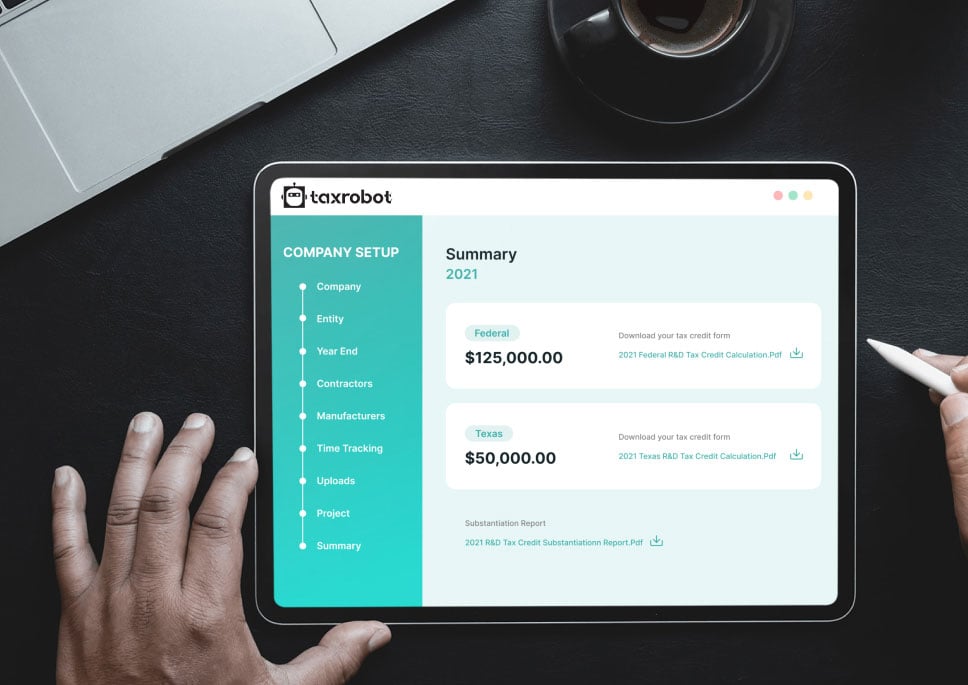Delaware R&D Credit
Take advantage of the Delaware R&D tax credits and give your business a chance to take on an edge in the market.
Maximize your State Credits today!
Put the R&D tax credit process on autopilot.
Trusted By:








Delaware R&D Credit
Discover your eligibility for Delaware R&D tax credits and supercharge your enterprise.
Are There R&D Tax Credits in Delaware?
Delaware is one of several states that offers an R&D tax credit. This credit is heavily based on the federal R&D tax credit.
The great part about this credit is that it is better now than it ever was before. In the past, the credit was limited based on a certain dollar amount that was allocated across all applicants. However, in 2019, that limitation was eliminated. Now, companies can take full advantage of the credit, no matter how many others do.
How Is the Credit Calculated?
Delaware is unique in that it uses two different methods for calculating the R&D tax credit.
The first method is the most straightforward. It is a credit equal to 10% of the company’s qualified research expenses. This specifically relates to qualified expenses within Delaware over the base amount.
The second method is a little more complicated. It ends up being equal to 50% of the apportioned share of the credit when using the federal Alternative Simplified method. This also only relates to qualified expenses within Delaware.
Qualifying for the Delaware R&D Credit
To receive the Delaware R&D tax credit, a business must qualify for it. This means being a business that qualifies and having expenses that qualify are requirements.
Businesses that Qualify
Many businesses could qualify for the Delaware R&D tax credit. However, businesses that qualify are limited to those that apply for approval. Businesses that don’t apply for qualification do not qualify.
So, the process of qualifying for the credit starts with approval from the Delaware Division of Revenue (DOR). The business must submit a copy of its federal R&D credit form, along with a Delaware R&D credit application. This is then processed, and the DOR will return to the business with the results of their application.
While businesses must apply to obtain this credit, any business with qualified R&D expenses can apply. So, any business whose expenses meet the federal requirement can apply for the tax credit in Delaware.
Expenses that Qualify
Delaware uses the same requirements for its tax credit that the federal government does. In fact, Delaware laws on the matter specifically indicate that the terms used in outlining their tax credit are the same “as when used in a comparable context in the Internal Revenue laws of the United States.” So, being familiar with the federal tax credit can serve as a qualified research expenses guide when dealing with the Delaware tax credit.
This means that expenses need to adhere to four principles. They must be:
- Technological in nature: They have to rely on principles of physical or biological sciences, engineering, or computer science.
- Intended to create new or improved products, processes, or services: These all intend to result in improvements or bettering the business in some way.
- Involved in eliminating uncertainty: This can be related to developing or improving the product, process, or service.
- Involved a process of experimentation: This is a broad category that relates to anything experimental. This can be testing one process over the other or even testing the specific aspects of a product.
Let TaxRobot Make It Easier to File for the Delaware R&D Credit
Filing for and receiving the Delaware R&D tax credit is undeniably positive for any company. However, the process of going about this can be arduous and prone to mistakes. This is especially true in Delaware, where the two different methods of calculating the tax credit can leave businesses wondering if they made the right choice and got the most out of the tax credit.
This is why many trust the professionals when applying for the Delaware R&D credit. TaxRobot uses advanced software to calculate a company’s tax credit. This eliminates uncertainty and makes the entire process easier. Plus, we will support you throughout the process, including maintaining any documentation you may need.
Find Out How Much You Could Save
Wondering just how much the federal and Delaware R&D credits could help you? Try out our calculator to get an estimate of your savings.
Take a sneak peak

- Limited Time Offer
- Simple Onboarding
- Easy to Use
R&D Tax Credits FAQs
The four-part test as outlined in the Internal Revenue Code is used to determine qualified R&D activity.
The Four-Part Test
1). New Or Improved Business Component
Creation of a new product, process, formula, invention, software, or technique; or improving the performance, functionality, quality, or reliability of existing business component.
- Construction of new buildings or renovation of existing buildings
- Invention of a software application
- Manufacturing of a new product or the improvement of the production process for an existing product
- Creation of design documentation
2). Technological In Nature
The activity fundamentally relies on principles of the physical or biological sciences, engineering, or computer science. A taxpayer does not need to obtain information that exceeds, expands or refines the common knowledge of skilled professionals in a particular field.
- Physics (relationship between mass, density and volume; loading as the
result of gravitational attraction) - Engineering (mechanical, electrical, civil, chemical)
- Computer science (theory of computation and design of computational systems)
3). Elimination Of Uncertainty
Uncertainty exists if the information available to the taxpayer does not establish the capability or method for developing or improving the business component, or the appropriate design of the business component.
- The capability of a manufacturer to create a part within the specified tolerances
- The appropriate method of overcoming unsuitable soil conditions during construction
- The appropriate software design to meet quality and volatility requirements
4). Process Of Experimentation
A process designed to evaluate one or more alternatives to achieve a result where the capability or method of achieving that result, or the appropriate design of that result, is uncertain as of the beginning of the taxpayer’s research activities.
- Systematic process of trial and error
- Evaluating alternative means and methods
- Computer modeling or simulation Prototyping Testing
The R&D tax credit is one of the most misunderstood tax incentives available. Considering the myriad of industries and activities that legally qualify for the credit, the term “research and development” is a misnomer. Additionally, the R&D tax credit requires specialized knowledge and technology to identify and calculate the incentive properly.
Companies of various industries are unaware that they are eligible to claim the R&D tax credit. Under the Internal Revenue Code’s definition of R&D, many common activities qualify. You can get tax benefits for industries including software, technology, architecture, engineering, construction, manufacturing, and more.
The R&D tax credit can be claimed for all open tax years. Generally, open tax years include the prior three tax years due to the statute of limitations period. In certain circumstances, the law allows businesses to claim the R&D tax credit for an extended period of time. It is common for companies to amend previous tax years to claim this benefit and reduce the maximum amount of tax liability.
Partnerships and S corporations must file this form to claim the credit. The credit will flow from the Form 6765, to the Schedule K-1, to the Form 3800 on the individual’s tax return. For individuals receiving this credit that have ownership interest in a partnership or S corporation, Form 6765 is not required on the individual return.
Individuals claiming this credit can report the credit directly on Form 3800, General Business Credit if their only source for the credit is a partnership, S corporation, estate, or trust. Otherwise, Form 6765 must be filed with the individual’s tax return (e.g. sole proprietorship).
For tax years prior to 2016, the credit can be used to reduce the taxpayer’s regular tax liability down to the tentative minimum tax. The credit cannot be used to offset alternative minimum tax. Beginning in tax year 2016, eligible small businesses have expanded utilization for the credit. For these eligible small businesses, the regular tax liability can offset alternative minimum tax using the “25/25” rule.
What our customers have to say
I highly recommend TaxRobot to anyone considering an R&D Tax Credit software to complete their analysis.

We decided to switch to TaxRobot… Best decision we’ve ever made. More affordable, and less complicated.

I couldn’t believe how easy it was! In under an hour, we saved enough money to hire a new employee.
